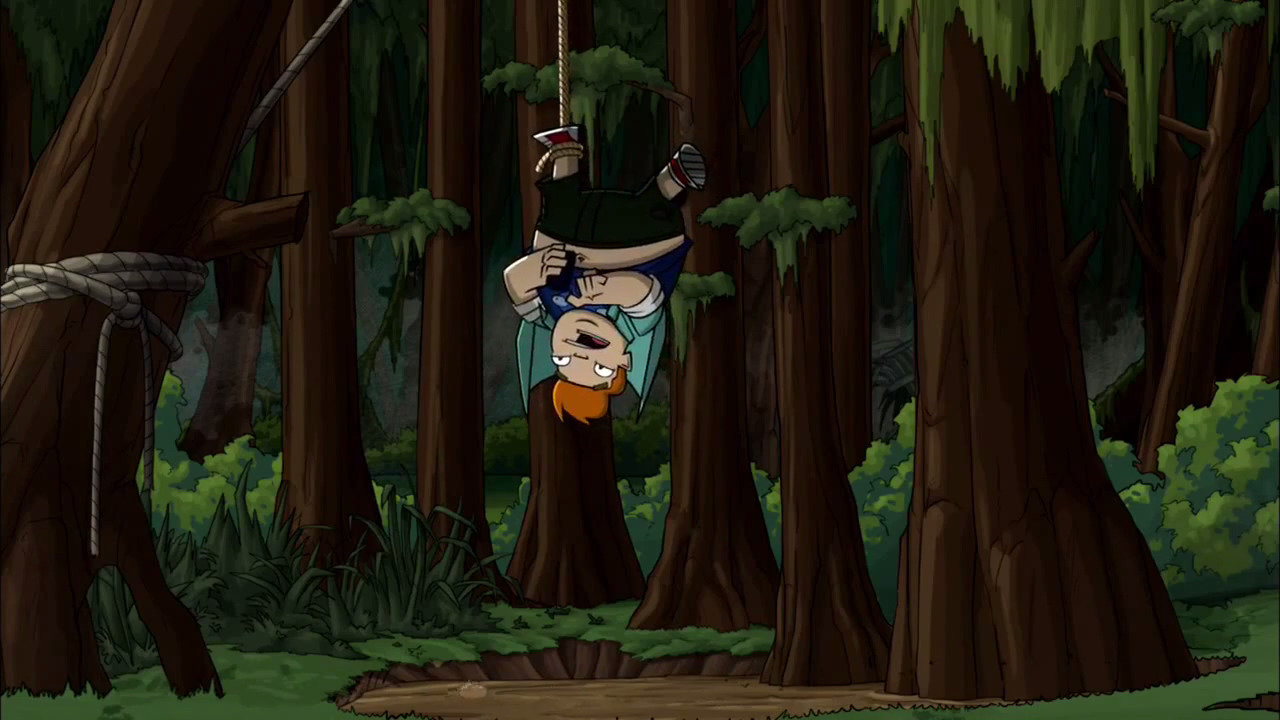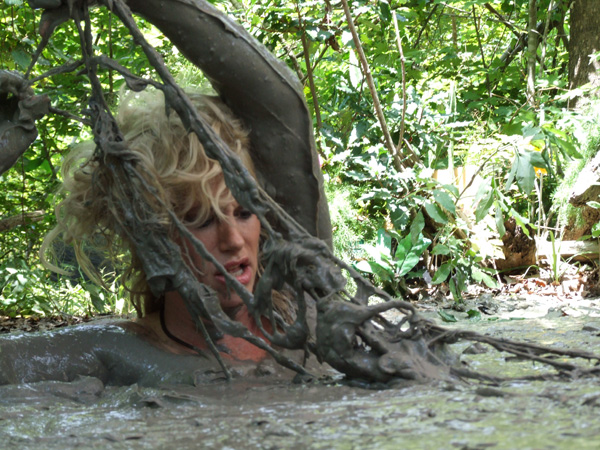

See also Sand Is Water, Mucking in the Mud, Swamps Are Evil, and Bubblegloop Swamp. As mentioned above, this is the point where it becomes dangerous to be around quicksand, as once objects have begun to sink, they reach a point where their buoyancy won't bring them down any further, but the surrounding material returns to its rigid state through shear thickening if more force is applied, thus holding things in place and leaving them at the mercy of further danger from the surrounding environment. However, if given sufficient agitation or shock (the margin of which is extremely narrow), the mixture of water and sand/silt becomes increasingly more elastic as it liquefies, and this is the point where objects begin to sink. When at rest, quicksand appears to be very hard, and its viscosity may be such that it can support the weight of lighter objects on it. Quicksand's ability to trap things largely relies on its interesting physical properties, being subject to a phenomenon in common with numerous other non-Newtonian fluids called shear thinning. (The La Brea Tar Pits in Los Angeles are a well-known example of one of these fossil troves.) There is also a hazard in nature called a "predator trap", where an animal gets itself hopelessly stuck in thick, sticky mud or tar and its corpse attracts the attention of multiple carnivores, causing them to become trapped and die of exposure as well sometimes becoming fossil goldmines. There are tidal flats which have seen so many deaths the locals are tired of watching stupid people die, but it's not wholly clear how much that is getting stuck in one specific spot versus getting trapped some distance from dry ground on slow-to-traverse terrain or attempting to wait on an insecure bit of slightly higher ground as the tide comes in around you. More to the point, being a tidal flat, it's a case where people actually ARE at risk of their lives, since tides have this funny way of coming back in after going out.

Viscosity decreases after an initial stress. The tide regularly refreshes the surface and smooth implies solid to people. Technically speaking, desert quicksand is hand-waved as being very loose sand that looks normal, but is incapable of supporting a large amount of weight.Īlthough not always strictly "sand", tidal flats (mudflats) have silt and mud which is actually closer to the danger portrayed in fiction as quicksand. In live-action, budget and set-design constraints sometimes lead to a "quicksand pit" barely large enough to hold the actor. Fictional quicksand tends to be placed in the desert, or away from a river or any apparent source of water although a hidden spring could in theory create quicksand in surprising places. Indeed, real quicksand requires water, and writers are traditionally unfettered by such technicalities. but that would happen even in boring old regular water. You could sink if you are weighed down by something you can't remove. In movies, it is often used to set up a Chekhov's Gun scenario in which the hero stumbles into it and escapes early on, in order to set up for a villain to die that way later in the film. In particularly challenging versions, enemies will come out and attempt to drag the player to the depths, making them somewhat similar to Instakill Mooks if sinking in quicksand is an instant-death condition (and it often is). This trope is a Discredited Trope nowadays, although the Shifting Sand Land of video games is still allowed to play it straight, as a gameplay challenge if nothing else.
JUNGLE QUICKSAND MOVIE
Originally a movie serial and B-film device, this trope has been carried over to television by way of programs that mimicked or paid homage to those films, or to pulp fiction in general. Although most victims blunder blindly into quicksand, it sometimes seems that the merest touch of an extremity is enough to pull the unwary into its muddy and all-consuming depths like iron filings to a magnet. In all cases, its most dangerous feature is its ability to suck people and animals down and drown them in a malevolent blend of sand and water. Science Fiction stories written before the Moon landings are also liable to describe thick layers of extremely fine lunar dust on the Moon's surface that are treated as functionally equivalent to quicksand. Quicksand is a common and deadly element of swamp, jungle, and desert terrain.


 0 kommentar(er)
0 kommentar(er)
